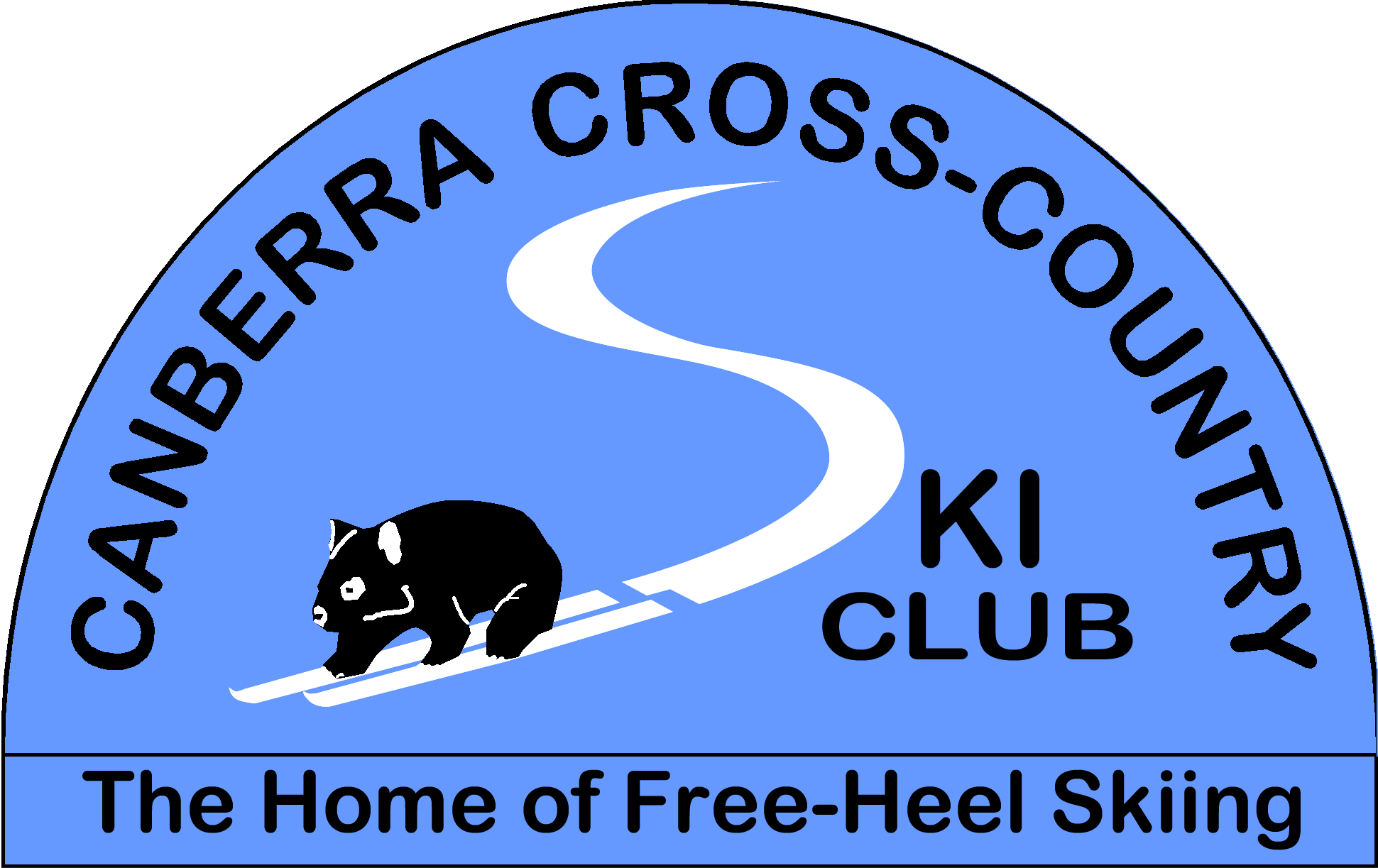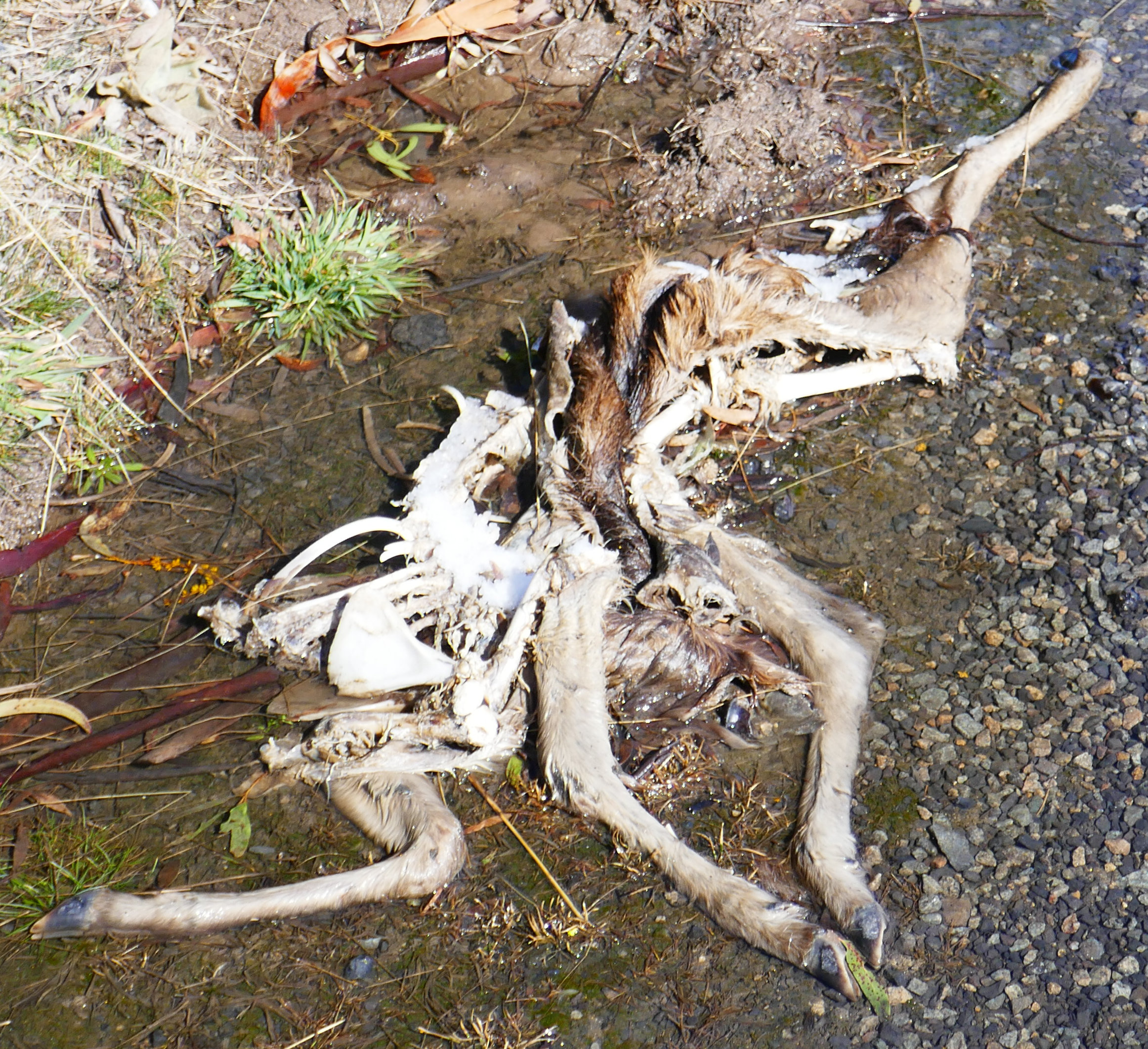Snow Driving Advice
Tips to help make driving to & in the Snowy Mountains easier & safer, including:

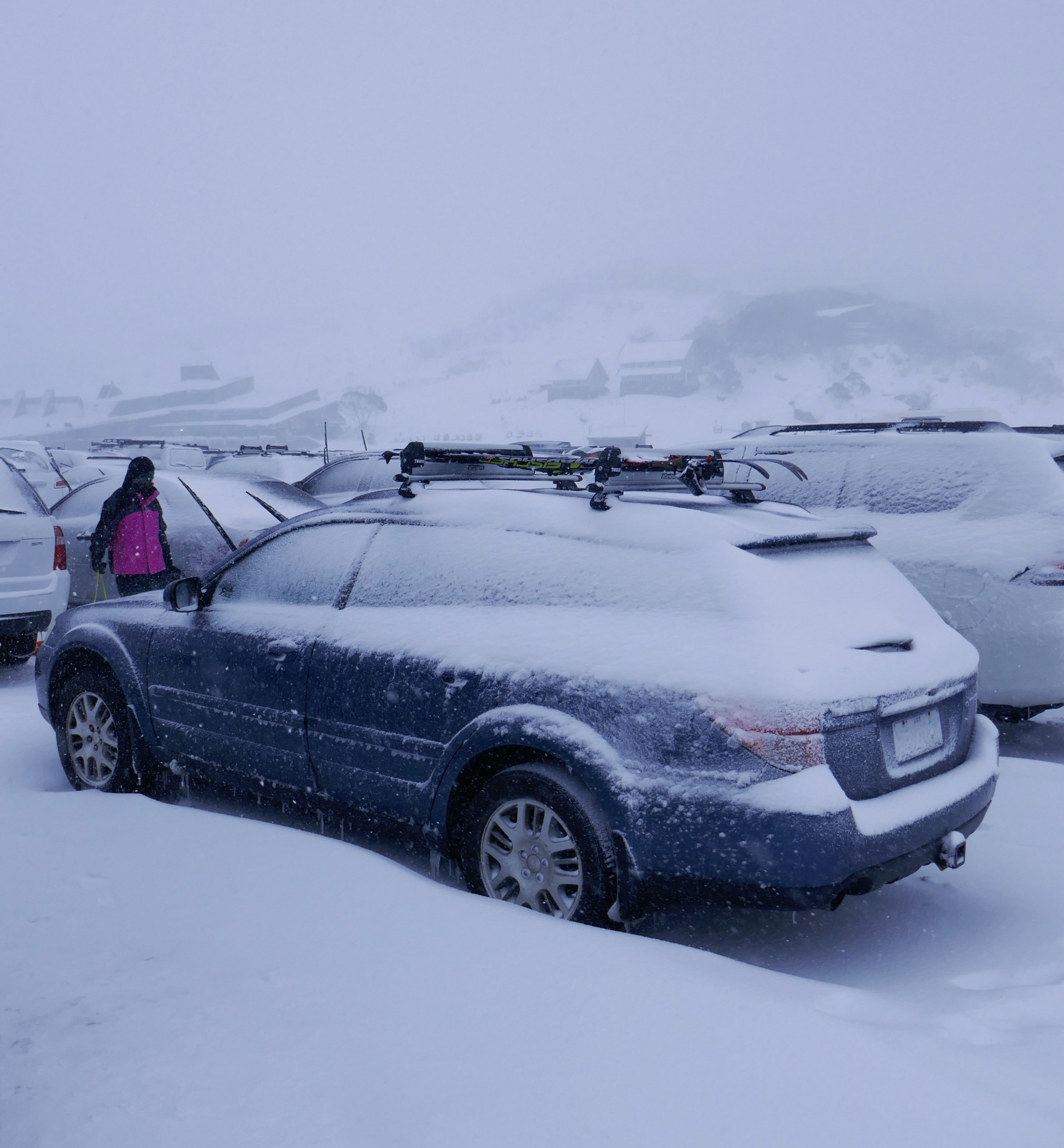
Preparing Your Car
Things to Carry
- Spade
- To dig snow away from car if it gets snowed in.
- Ground sheet
- To keep you off the wet ground when fitting chains.
A blanket will also work (for a while) & can keep you warm at other times. - Rubber gloves
- Keep your hands dry & help protect your expensive warm gloves when fitting chains.
- Plastic ice scraper
- To remove snow & ice from car windows.
- Spray bottle of metholated spirits
- To melt ice off car windows.
- Warm clothes
- In case your skiing clothes are wet from a tour, or you want to look spiffy off the snow.
- Torch
- So you can see what you are doing after dark.
- First Aid Kit
- In case of an accident.
Make sure you know how to use it. - Plenty of fuel
- To keep the heater running should you be held up.
Things to Check
- Air Conditioner
- If your car has air conditioning, ensure it is working properly.
Using the air conditioner is a great way of demisting the windscreen. - Antifreeze
- Your car will need antifreeze.
Winter days can remain colder than freezing all day & ski season nights in the mountains can get very cold indeed.
An unprotected engine will freeze in these conditions.
Some older engines may develop leaks, due the the penetrating properties of antifreeze.
Add the antifreeze well before Winter to give you time to fix any problems found. - Battery
- Ensure that your car’s battery is clean & the electrical systems are in good condition.
The cold and thinner air will make starting the motor harder, so if your battery has trouble in Canberra, then there’s a good chance that it will be too weak to start your car up in the mountains. - Brakes
- Ensure your brakes are working. Brakes that grab or brake unevenly from side to side can be particularly dangerous on slippery or icy roads.
If your car has anti-lock brakes, have the system checked & know how the system operates. - Chains
- Snow chains must be carried by all vehicles (except 4WD) entering the Kosciuszko National Park from the June long weekend to the October long weekend.
Snow chains can be hired in Canberra or along the way.
Ensure that whoever hires them to you fits them – to show how to do it and to ensure they are the right size for your tyres.
Fit them yourself – to ensure that you know how to.
In Snow/Ice Risk Areas, police & NPWS officers can legally direct you to fit snow chains.
See below for more about using chains. - Engine
- Check that the engine starts easily & runs well. The colder & thinner air at the ski fields can make starting your car much harder.
- Tyres
- Check all tyres have good tread, including the spare.
Bald tyres and icy roads are a combination waiting for a crash.
If frequent snow travel is intended, then a set of Winter tyres with an aggressive tread pattern is a good investment in safety. - Lights
-
Ensure all lights are working. This includes:
- low beam
- high beam
- tail lights
- stop lights
- reversing lights
- driving lights
- fog lights (yellow is best)
- interior lights
- map lights.
High beam can cause a white out effect in fog, so use low beam instead.
- Roof Rack
- Ensure the roof rack is securely fitted.
- Windscreen
- Ensure that the windscreen is clear and the demister works.
- Windscreen Wipers
- Renew windscreen wipers well in advance of Winter, to allow them to bed in.
When parking in freezing conditions (e.g. snow or sleet is falling), lift wipers off the windscreen. This is to stop them from freezing onto the glass.
Preparing You
Weariness
On most day trips, everyone drives up to the snow in the morning & back that evening.
To help you stay alert, have a good night’s sleep, so you are well rested for the drive there & back.
Fatigue related crashes often occur in the first 2 hours of a trip, or on short trips.
That is why it is important to take a break from driving before you find yourself becoming drowsy or losing concentration.
Never wait until tiredness is upon you because crashes frequently happen within minutes of nodding off.
A good plan is to get one of your passengers to drive part of the way, e.g. from Cooma to Jindabyne and vice versa.
During that time, you can have a nap or just rest.
With enough willing passengers, you hardly need drive at all!
Driving all the way, both ways, is very tiring. You may not feel it that day, but you will the next.
Drinking alcohol is unwise, as even one drink inside you can cause drowsiness.
Chains
Know how to fit your chains & are comfortable with doing it.
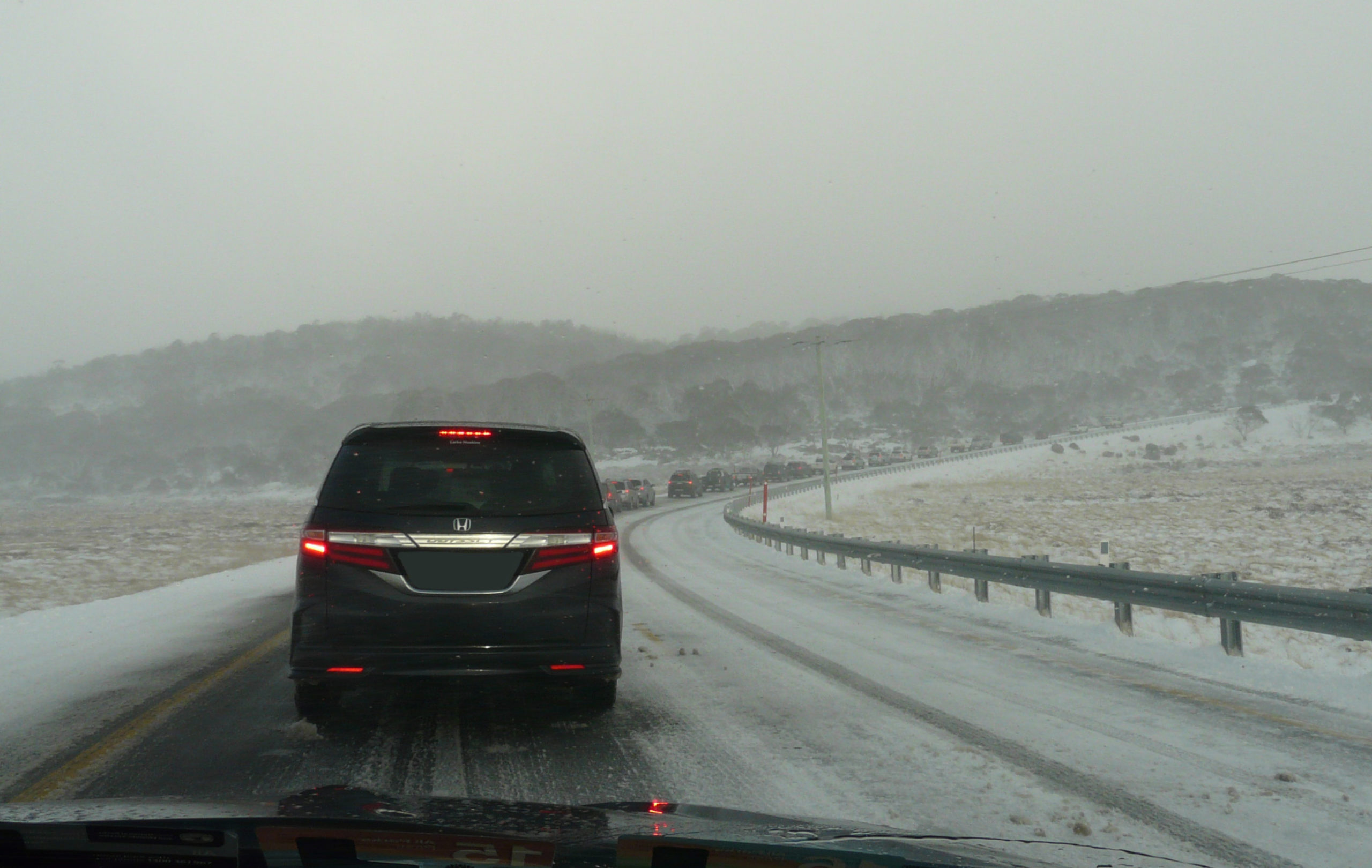
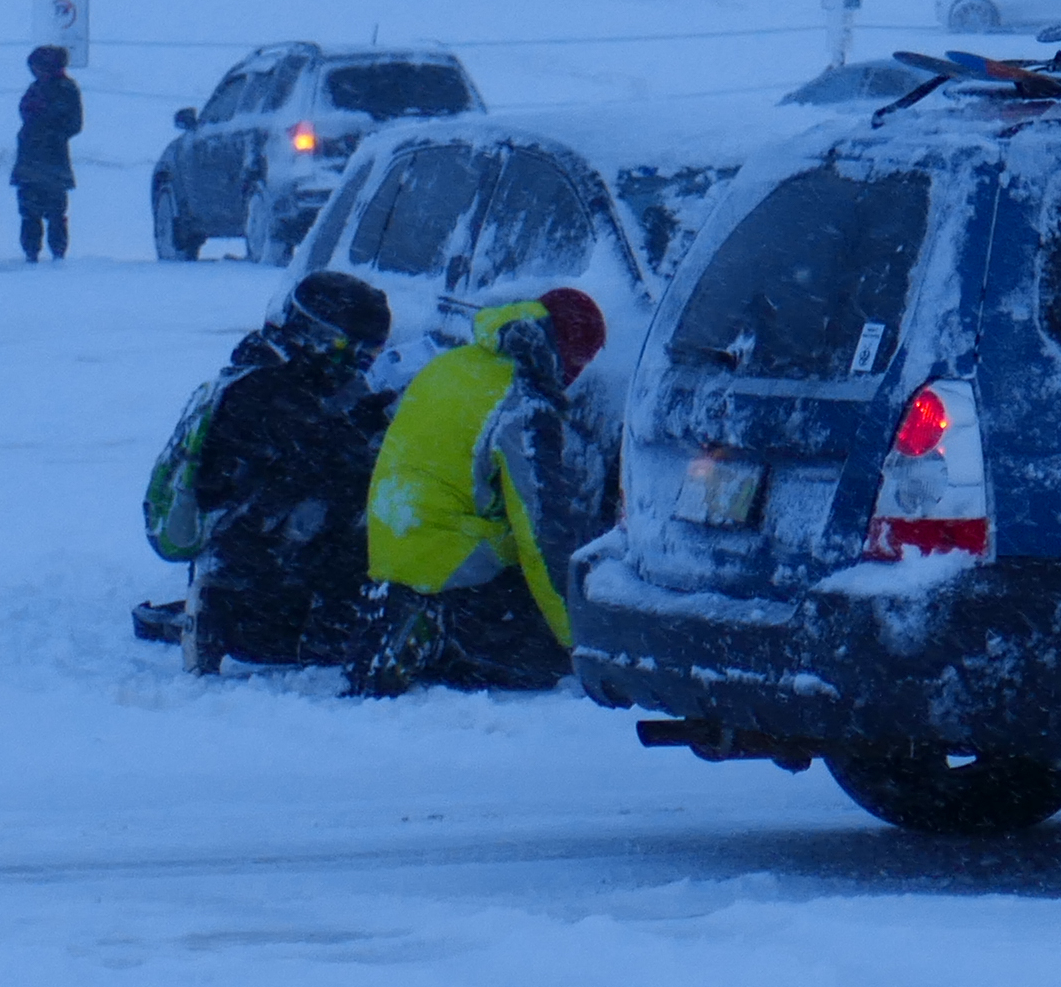
Chain Fitting Checklist
- Fit chains to the driving wheels.
i.e.- rear wheel drive (RWD)
- rear wheels
- front wheel drive (FWD)
- front wheels
- four wheel drive (4WD)
- front wheels
- Use correct fitting chains.
- Test fit chains before a trip or when hiring them.
- Fit chains at fitting bays on level ground.
Pull over to the left as far as you can. - If they fall off or loosen when car is in motion, stop & check brake lines for damage, before retensioning the chains.
- Keep speed below 40km/h.
- A torch, plastic garbage bag (or ground sheet) & (rubber) gloves will make fitting easier.
- Do not even try using a jack to lift your car to put chains on.
Icy conditions make it very easy for your car to slide off. - Diamond chains are recommended.
- Chains change your car’s handling.
Take time to readjust your driving. - Do not put on chains before you need to, nor leave them on after you are clear of snow and ice areas.
As well as wearing out your car, they damage the road surface.
Fitting Snow Chains
These instructions are for ladder style chains, which are the cheapest & most commonly hired.
- Place the hoops without levers over the tyres.
Carefully drive forward or backward a 1/4 of the wheel’s circumference. - Reach behind the tyre and hook up the inner hoop as tightly as possible.
- On the outside side of the tyre, place the loose piece of chain over the lever and tighten.
Hook keeper over end of end-lever.
Slip any excess chain over lever. - Drive for a few metres, stop, and re-tighten the chains as necessary.
General Snow Driving Tips
Drivers need to adapt to slipperier roads, so smooth driving and gentle use of steering, brakes and throttle is important.
- Obey local speed limits in resorts, chain fitting bays and elsewhere.
- Obey parking signs.
Cars parked incorrectly are vulnerable to damage from snowploughs or getting buried for winter. - Before leaving the ski fields, be sure to clear any snow from the car roof.
This is to avoid creating a road hazard to other vehicles. - Drive cautiously with gradual pressure on the accelerator to avoid wheel spin.
- Avoid unnecessary gear changes.
Engage 1st or 2nd gear on level ground before ascending or descending hills in snow or ice conditions. - Use low gears on slippery & downhill roads.
This includes automatic cars.
This will allow you to use engine power to control the car’s speed. - Brake gently.
Front & rear wheels can lock easily.
This may mean loss of steering and control. - Brake using short pumps on the pedal.
This habit will help your wheels maintain grip on the road. - Avoid braking when cornering.
- Keep well behind the vehicles in front, at least twice the normal distance. e.g. If you normally keep a 3 second buffer to the car in front, increase it to 6 seconds.
This gives more room to react & move to avoid trouble in front. - On reaching a snow covered section of road, gently apply your brakes to get an idea of using them on snowy surfaces.
- Turn on headlights or foglights in whiteouts, fog, & blizzards.
- Keep well away from snow clearing machines.
It is often needed to reverse these machines and snow clearing operators may not be able to see you in drift or falling snow conditions.
Also, the spectacular fountain of snow coming from the blowers may contain ice chunks and stones. - Overtake not snow clearing equipment until it has stopped blowing snow.
- Be not a downhill racer.
- When meeting oncoming vehicles, give the vehicle going uphill the right of way.
It is much harder for a climbing vehicle to start again if it has to stop. - Be patient when overtaking large vehicles, such as buses.
Wait until visibility is good, before overtaking. - In an emergency, it is better to control your car by steering rather then braking.
Hitting the bank or being stuck in a snow drift is better than going over the edge!
If you get into a skid, turn the front wheels into the direction of the skid, release the brake & disengage the clutch (if you have one).
After the skid ceases, gently apply your brakes. - Always drive within vision limits. (You should be doing this anyway.)

